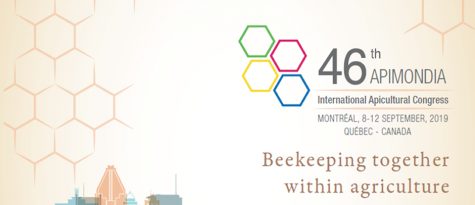
09.10.2019
46th Apimondia Congress in Montreal. «Working together in agriculture»
«Taking care of bees and honey business is one of the priorities that should be kept». September 8 – 13th BEEHIVE visited 46th Apimondia Congress in ...
Global honey market is really tough. Despite the global market volume growth from 1.3 mln. mt in 2001 to 1.9 mln. mt in 2017, the average market price is steadily decreasing, putting extra pressure on the producer and all the links in value chain as to cost optimization and value-chain streamlining.
Nevertheless, there are few good examples showing that extracting of product’s added value is possible even in the most aggressive and competitive market environment. Moreover, those examples are clearly confirmed by corresponding data: in the condition of overall market price declining, New Zealand and Brazil honey producers were able both to increase their export levels substantially and to raise the price for the product they offer to the market (New Zealand from 5,13 EUR in 2008 to 23,54 EUR in 2018, Brazil from 1,91 EUR in 2008 to 3,34 EUR in 2018).
Here are some interesting facts:
On a volume basis New Zealand accounts for just 1.5% of global honey trade. Nevertheless, New Zealand honey receives a price multiple that is seven to nine times higher than most other exporting countries. New Zealand export volumes are just 7% of China’s but achieve an average price that is 13 times higher. Most of the product sold by the other major exporters is significantly lower value than New Zealand honey, with an average export price of USD$3-4/kg, compared with New Zealand at USD$28/kg. This indicates New Zealand product is in a completely different category to that of nearly all other major exporters. Most of the competitive pressure is going from other competing health and wellness products, rather than other producers of honey.
Brazilian exports have started not so long ago, in 2003 with China’s honey embargo in the EU. Now Average honey exports are between 15 and 20 thousand tons yearly, contributing more than 60 mln. USD to Brazilian economy. And this is despite the fact that beekeeping in Brazil is very unprofessional from the productivity point of view – Brazilian honey productivity per hive is about 15 kg/colony/year. Comparing to Argentina with 35 kg/colony/year, Australia with 118 kg/hive/year in average and China 100 kg/hive/year, Brazilian beekeeping has much to grow.
What are the main elements of differentiation strategy, used by both the governments and private enterprises? We can specify some of them, namely:
Cases of both countries present good example of how cooperation between government and private business, multiplied by precise defined strategy aimed at product- and country-based differentiation brings its long-term results and provides for corresponding export expansion.
Should Ukraine have it as an example or step-by-step plan – hard to say. But the conclusion suggests itself – in a highly competitive environment on the honey market the extraction of added value is still possible and, more importantly, needed. Adding government support to this, some success can be foreseen.